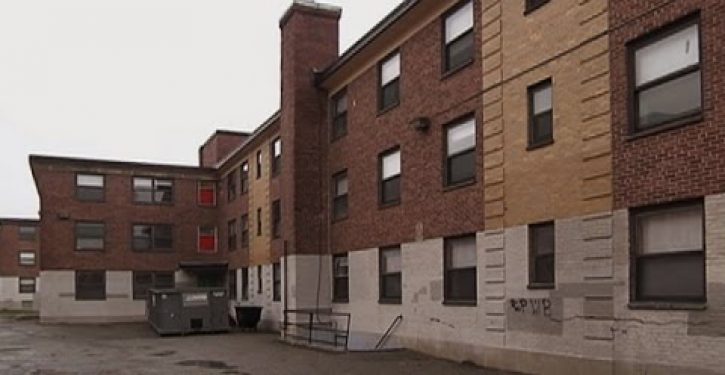
Why is housing so expensive? Zoning restrictions and complicated and inflexible building codes contribute to the problem. They restrict the supply of housing, even as demand rises.
As the Competitive Enterprise Institute’s Ryan Radia notes, “In 1973, we built one new housing unit for every 33 U.S. households. In 2005: one new home for every 55 households. In 2021: one new home for every 92 households.”
“Zoning and other regulatory barriers are the main cause of housing shortages and resulting high prices that lock millions of people (particularly the poor and lower middle class) out of areas where they could otherwise find valuable job opportunities, says George Mason University professor Ilya Somin. “In addition to preventing many people from … finding job opportunities, these policies also greatly diminish overall economic growth and productivity, thereby harming the nation as a whole.”
California recently relaxed single-family zoning restrictions that made housing hard to build, by passing two new laws. SB9 allows owners of lots in areas currently zoned for single-family residences only, to build a second housing unit on the property. In addition, they can also divide the lot into two separate properties. SB 10 lets local governments upzone parcels located in “transit-rich” areas to include up to ten housing units.
But California still has other housing policies that drive up the cost of housing. As the California Policy Center noted in 2018,
There are obvious reasons the median home price in California is $544,900, whereas in the United States it is only $220,100. In California, demand exceeds supply. And supply is constrained because of unwarranted environmental laws such as SB 375 that have made it nearly impossible to build housing outside the “urban service boundary.” These laws have made the value of land inside existing urban areas artificially expensive. Very expensive. Other overreaching environmentalist laws such as CEQA have made it nearly impossible to build housing anywhere. Then there are the government fees attendant to construction, along with the ubiquitous and lengthy permitting delays caused by myriad, indifferent bureaucracies with overlapping and often conflicting requirements. There is a separate fee and a separate permit seemingly for everything: planning, building, impact, schools, parks, transportation, capital improvement, housing, etc. Government fees per home in California often are well over $100,000; in the City of Fremont in 2017, they totaled nearly $160,000 on the $850,000 median value of a single family home.
Economists support getting rid of many zoning regulations. As Professor Somin notes,
The case for cutting back on zoning restrictions unites economists and housing policy experts across the political spectrum. That includes both pro-free market experts and prominent left-liberals such as Nobel Prize-winning economist Paul Krugman…and Jason Furman, Chair of President Obama’s Council of Economic Advisers. In addition to greatly increasing housing costs, zoning also cuts off many poor and lower-middle class Americans from valuable job opportunities, thereby also greatly reducing economic growth.
Restrictions on housing construction made housing prices rise a lot in California and Oregon. These states placed many areas off limits to homebuilders and discourage new housing elsewhere with a maze of complicated permitting and construction requirements.
California has more space than the entire nation of Japan, and less than a third of Japan’s population. Japan is very densely populated and has less wealth than the United States. But even in Japan’s capital Tokyo—the world’s most populous metropolitan area—people are able to afford housing. Why? Fewer zoning restrictions.
As Market Urbanism notes,
Japanese zoning is relatively liberal, with few bulk and density controls, limited use segregation, and no regulatory distinction between apartments and single-family homes. Most development in Japan happens “as-of-right,” meaning that securing permits doesn’t require a lengthy review process. Taken as a whole, Japan’s zoning system makes it easy to build walkable, mixed-use neighborhoods, which is why cities like Tokyo are among the most affordable in the developed world.
As the Wall Street Journal points out, although housing has gotten much more expensive in 32 major cities across the globe,
one major city has had stable housing prices as a result of pumping out housing supply to keep up with rising demand. Tokyo is one of the few cities in which supply has kept up with demand, keeping a crisis from developing. But that is due largely to deregulated housing policies that other countries would have a hard time reproducing….
In the past two decades, home prices in some leading North American and European cities have skyrocketed. In Tokyo, however, they’ve flatlined. So why no affordable-housing crisis in Japan? A big factor, experts say, is the country’s relatively deregulated housing policies, which have allowed housing supply to keep up with demand in the 21st century. With no rent controls and fewer restrictions on height and density, Tokyo appears to be a city where the market is under control—where supply is keeping home prices from rising as drastically as they have in many other major world cities.….The Japanese government began relaxing regulations that had restricted supply, allowing taller and denser buildings in Japan’s capital. Private consultants were given permission to issue building permits to speed up construction. “This created something like a free-trade zone in Tokyo,” Mr. Sorensen said.
Allowing more dense housing was critical to keeping housing affordable for the middle class:
Two of Japan’s largest housing construction companies … both say that the easing of land and construction regulations has helped them build in Tokyo. The companies say that deregulation has benefited them particularly in their ability to expand housing units by replacing low-rise residential complexes with much higher ones.
Local building codes that vary from county to county and state to state make housing more expensive by preventing mass production of housing. A factory can’t just come up with cheap, durable modular housing and then sell it everywhere. Imagine how much more expensive cars would be, if they had to be produced by hand in tiny factories located in each individual state or county, rather than (as is currently the case) being mass produced in large factories in a few states (in facilities that use robots and take advantage of economies of scale).
The endless variation in what is required for different locations, makes it hard for factories to produce housing that can be used in many different places. That makes it hard to set up factories that produce large amounts of cheap, high-quality modular homes.
The net result is lower productivity in the construction industry. U.S. construction-sector productivity is lower today than it was in the late 1960’s. As Market Watch noted in 2017,”While construction has appeared stuck in a time warp, other sectors have transformed themselves. Consider that in the United States between 1947 and 2010, agriculture achieved cumulative real growth in its productivity of 1,510% and manufacturing 760%. Construction managed only 6%. U.S. construction-sector productivity is lower today than it was in 1968, and investment has fallen over the past decade.”



